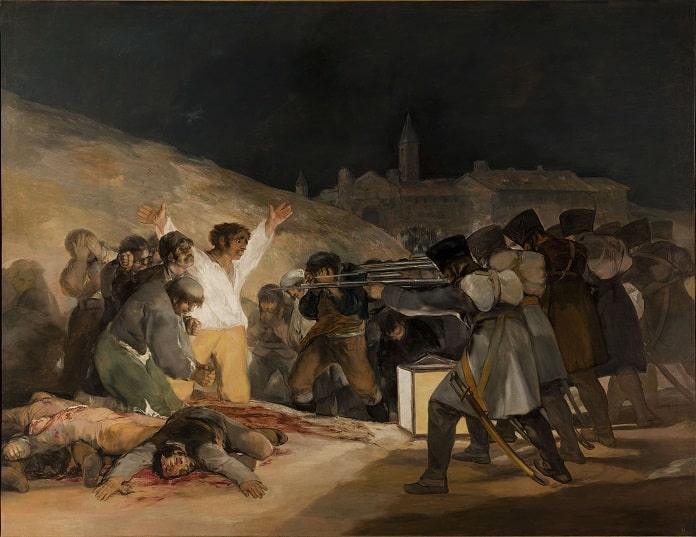Artists represent the world, however the point is to change it. I argue that John Molyneux’s new book helps us to do that.
The book mostly consists of articles previously published in Socialist Review and the International Socialist Journal, with chapters at the beginning and end which confront how art develops and how we judge it.
This very valuable collection of review essays gives us an insight into how life should be much more than working for someone else’s profit. Workers sell their ability to work and get only enough, or a little more than enough, to survive, but bosses make astronomical profits. In January this year Oxfam revealed that the wealth of the 10 richest men has increased by half a trillion dollars since the pandemic began. Artists mostly have no choice but to work while finding the time to make art.
I recommend John Molyneux’s The Dialectics of Art not only to artists and art lovers but to all, because humanity’s present and past has always involved change in representation. We have been making images for a very long time.
Molyneux refers to paintings in Chauvet and Lascaux dating some 33,000 years and we know that the original inhabitants of what is now known as Australia have the longest continuous tradition in the world of image-making, dating back at least 50,000 years and probably much more.
Stories, instructions and memory reflect the depth and richness of life in rock carving, ochre cave painting, bark painting, decorative work on tools, ceremonial items, traditional weaving and body painting.
It is too difficult to cover the whole book so I’ll concentrate on a few ideas. Molyneux discusses Goya’s series The Disasters of War, which depicts scenes of awful atrocity from the revolt of the Spanish peasantry against Napoleon’s invading army. He makes the point that Goya does not do this for its own sake but to take sides.
Another example of Molyneux’s empathy for the oppressed and exploited is his discussion of Rembrandt’s small drawing, A Woman on the Gallows (1664), which he argues shows the new capitalist class’s justice system through Rembrandt’s eyes.
The etching shows a young Danish girl hanging in chains with her axe, the implement she used to murder. Molyneux and Rembrandt take sides. In this painting, beyond its formal composition is the question, whose side are you on. As Molyneux says: “Not between the victim of the crime and the criminal, as the capitalists would have it, but between the state and its victim.”
Class struggle is represented graphically in changing ways. Artists illustrate the world around them by representing an intrinsic changing relationship both in class and in individual terms.
I loved the chapter Liberty of Appearing: The Photographs of Yassar Alwan, written for a travelling exhibition. Molyneux says working people suffer relentlessly in late capitalism but, as Marx said, workers also have an immense capacity to resist and end their suffering by emancipating themselves and humanity. Alwan’s photos show the complexity of working people around the time of the 2011 Egyptian revolution.
At the end of an interview with Socialist Review Molyneux embraces how art will not only have to intertwine with protest about climate change but play a role in the fight for human survival and human emancipation, which in turn requires the healing of the metabolic rift with nature created by capitalism.
Art constitutes an important part of what it means to be human and is intertwined with the struggle for human liberation.
I hope I have tempted you to read the book.
By Melanie Lazarow
John Molyneux, The Dialectics of Art, Haymarket Books (2020), $35. Email [email protected] to order your copy.



